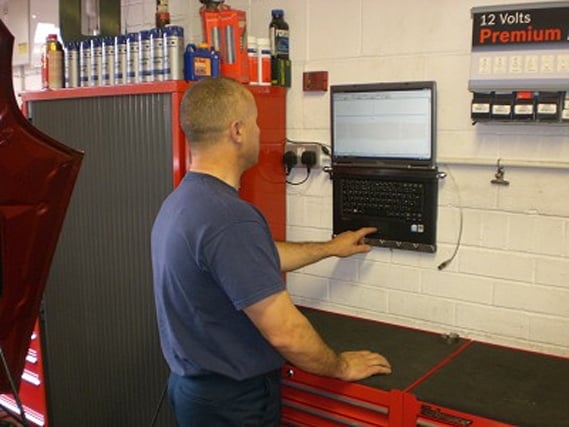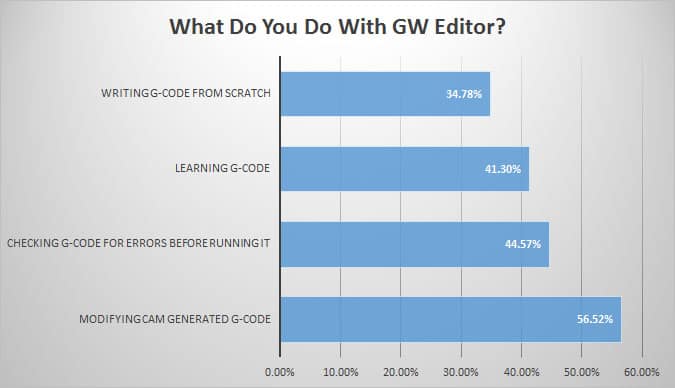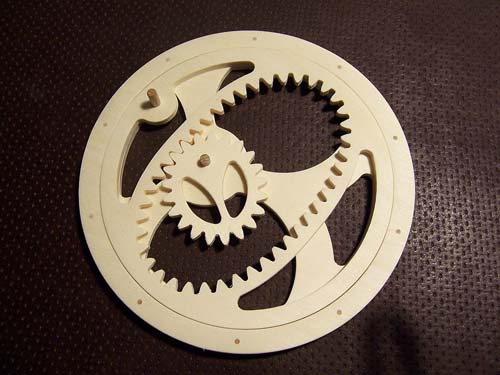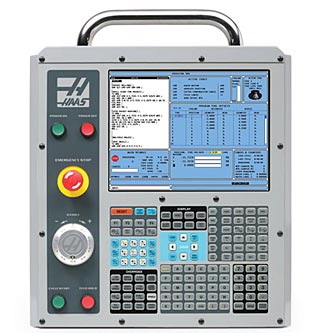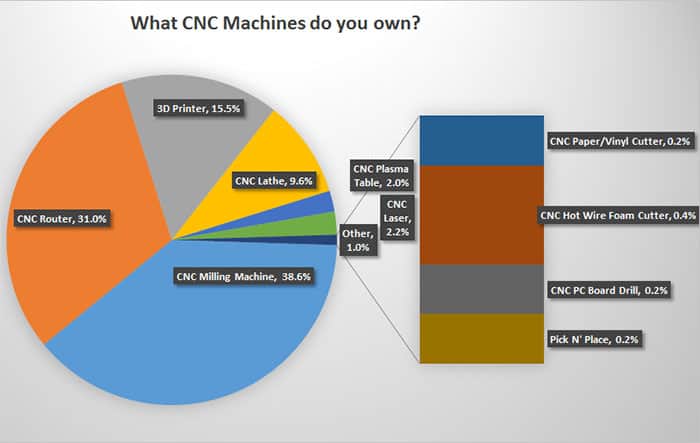2 months by cncdivi
Alright, I’ll come clean–I’m a fervently devoted advocate of the Internet. It has revolutionized the way we obtain information in an amazingly short span of time. It’s integral to every aspect of life. In our home, traditional TV viewing is a thing of the past. The overload of commercials has made it almost unbearable. If we engage with any type of show, it’s through a computer connected to the Internet. This could be an iPad or Kindle tablet, a laptop, or a standard desktop PC. Each person in our family possesses a computer, our gaming consoles are Internet-enabled, and three out of four of us have tablets. On top of this, we also have several spare computers available, like the one I employ to operate Mach3 in the workshop, which itself is also wired into the web.
There’s a lot more than 10 reasons to have an Internet connection in your shop, but here’s 10 to start with:
1. For looking up obscure data and other kinds of research.
You can find dimensional information on all sorts of parts on the Internet these days. It’s faster to Google it than to try to track it down through handbooks and catalogs, so I go straight to the Internet when I need that sort of information. Even better, you will now have access to all the practical knowledge available from the wealth of machining-related sites out there. You can ask for help with specific questions on boards like Practical Machinist or CNCZone. You can query your tooling manufacturer’s customer service online for help with tool life or what the best inserts are for that new job that just came in the door. There’s really no end to the information value of the Internet for answering quick questions. Whatever brick wall you’re banging your head against, chances are some other machinist found a way around that brick wall and can help you too.
2. For moving G-Code or CAD/CAM data around.
I hate messing with USB keys or memory cards. I lose them, get confused about which one has the latest version of a file, and manage to waste time in all sorts of other ways. All of my machines are Internet connected and I use Dropbox as an ideal way to move files around. Given that my CAD/CAM workstation is up two flights of stairs from the workshop, that’s a good thing! It’s also a good thing that I always save my g-code or CAD/CAM files to Dropbox so I can access exactly the same file downstairs in the shop that I was just looking at upstairs in the office.
3. So I can check E-Mail and help customers.
Yeah, it’s a constant distraction, but my customers come to me via email by and large. As a small businessman, I need to keep a finger on that pulse. Just because I am down in the shop doesn’t mean a customer won’t need help. If you’re a small business owner, I don’t know how you can afford to be out of touch with customers. BTW, not every small business depends as much on the Internet as CNCCookbook, but it isn’t just customers. All our web properties are monitored and we get alerts via email if one goes down. That’s another thing I don’t want to be out of touch with for too long. If you wouldn’t want a shop without a telephone, why have one without email?
4. For quick calculations of all kinds.
I run a copy of G-Wizard Calculator on my Shop PC, of course, and I use it constantly. For example, I was just in the shop and needed to tap a hole. What sized drill to use? Well, that depends on what percentage threads I want, and G-Wizard will tell me that. The package the tap came in just tells me one size drill and doesn’t mention what thread percentage I will get. Thread percentage matters when tapping. G-Wizard is chock full of reference materials and special purpose calculators of all kinds. It even has a general purpose scientific calculator that includes all sorts of unit conversions.
5. So I can do other work while the CNC is humming along.
I’ve organized my PC using a variety of tools like Dropbox so that no matter what machine I am using, I can get at most of my work files. This allows me to freely switch around the various PC’s, makes it easy to use my most powerful desktop PC most of the time, and makes it easy for me to be able to keep working even when I am travelling. FWIW, I’ve verified that CNCCookbook can be run smoothly from my laptop computer in the cabin of a cruise ship or from my hotel room if I’m scuba diving in Cozumel, Mexico. That’s pretty cool! So, of course I want to be able to access it from my shop.
6. For Tweaking G-Code
Strictly speaking, you could run a lot of g-code editors without an Internet connection, but if you’re going to be tweaking code it sure is handy to be able to access the Internet too. After all, there’s a wealth of handy code snippets and already created and tested macro subprograms you might want to access and cut and paste into your own part programs. It could be something as simple as wanting to take someone’s example of how to use some g-code, perhaps a canned cycle, and copy and paste it into your own code and then modify it until it serves your purpose.
7. To access documentation
Like any technical discipline, CNC manufacturing involves a wealth of documentation. Having that documentation available online is extremely handy. For example, I refer constantly to the various books that go with my CNC controllers. It’s really nice to be able to access them online and use search functions rather than to have to deal with them on paper. These days, as soon as I buy something that has documentation, I will often search and see if the doc is available as a PDF online. If it is, I stash a copy in Dropbox (so I can access it from all my machines) and then throw out the paper copy so it isn’t laying around cluttering up the work space.
8. Shop Floor Productivity and Collaboration
The opportunity to use computers on the shop floor to increase productivity and collaboration is huge. It spans the gamut from very simple ways computers can enhance shop floor productivity to sophisticated software packages that collect and organize all sorts of data in order to optimize shop floor operations.
For starters, let’s just think about the simple end of things. A few shared documents and spreadsheets can help streamline things a lot. Consider:
– “Squawks”: Pilots keep track of “squawks” on any airplane they fly. A squawk is a complaint or observation about maintenance or other work that should be done for the aircraft. Why not have a squawks list for every machine on your shop floor? It’s easy to keep them either in a spreadsheet or word processing document. Dedicate one document per machine, keep them all in a folder under Dropbox so they can be accessed anywhere, and the make sure someone reviews the squawks lists and does something about them.
– Suggestion Box: Squawks can also be suggestions for how to improve productivity. Maybe there needs to be a dedicated set of Torx drivers at a particular machine to facilitate changing inserts. Perhaps there is some other tool that is constantly needed and should be kept at the machine. The time to note down things like this is when you get the idea in the heat of the moment. Add them to the Squawks list for the particular workstation or make a new list for suggestions. I like spreadsheets and fewer lists because I can designate a column in the spreadsheet as a category. Typical categories might be “Broken”, “Missing”, “Suggestion”, and so on.
– Shopping List: How do you keep up with your shopping list? If you’ve got a small shop, you’re probably not expecting your ERP system to tell you what to order or when. Keep a list that everyone can access. Tell them to add it to the list when they use the last one of something or when something is about to run out.
– Check Lists: Check Lists are great productivity enhancers. You can have checklists for each morning to start up the machines and get the shop ready to be productive. You can have checklists for shut down at the end of the day. Checklists for setting up common jobs you do all the time. Periodic maintenance checklists for each machine.
– Experience Notes: Good machinists constantly jot down notes about what works or doesn’t. Get organized about this with online resources. You’ll want to be able to track notes in general, notes for particular machinery, and notes for particular jobs. If you want to get systematic about productivity, use tools like G-Wizard’s Cut Knowledge Base. It lets you track every single cut your shop makes so you can tell how close you can get to the edge without breaking cutters. Keeping good records on this sort of thing can dramatically increase profitability.
This list goes on and on, but you get the idea. Put together common sets of practices and base them on shared documents and you’re off and running. Just because your shop is too small to use high-end Shop Floor automation software doesn’t mean you can’t benefit from a little online organization!
9. For Conversational CNC
For a lot of simple CNC jobs it’s very inconvenient to have to access a CAD/CAM program. Manual machinists often envision CNC as being cumbersome and less productive for one-off parts because they assume the only way to deal with g-code is using CAD/CAM software. That’s not the case, though. Every CNC machinist should become proficient at doing simple things through the MDI interface. Doing so turns your CNC into a manual machine with power feeds and DRO’s on every axis. Nice!
But the next step is conversational CNC. This is software that acts like the Wizards we see in products like Microsoft’s Office suite. You answer a few simple questions and the Conversational CNC generates a little block of g-code to do some specific task. CNCCookbook recently announced we’ll be delivering our own G-Wizard Conversational CNC product–check out the deep hole cycle wizard we just released. It turns out there is a fair amount of conversational CNC out on the net as well. For example, you can grab a little program from Micro100 called “Thread Mill Assist” to help in creating thread milling routines. Utilities like this are all over the net and there for the taking. You just need to be able to Google and then download them when you discover you need one.
10. To stave off boredom.
Opinions will vary on whether this is productive or not, but I find I get a lot of use out of my Internet connection in the shop to stave off boredom. For example, I keep my music files on Dropbox so I can access them from all my machines. When I want a little music in the shop, I just crank up the tunes. If I’m tired of my music, I can fire up Pandora or whatever else and hear some new songs. Or, I may jump onto one of the various machining boards (Practical Machinist, CNCZone, or many others) and see if there is something new I can learn or someone I could help out by answering a question. Sometimes I just need to kill a little time while waiting for the CNC to finish its current job.
Why doesn’t everyone have an Internet connection in the shop?
I generally hear three arguments against having Internet-connected PC’s in the shop:
– I’m afraid to connect my CNC machine to an Internet-connected PC.
– I don’t have access to the Internet from my shop.
– I’m afraid my employees will waste a ton of time if they have access to the Internet.
Let’s consider each one in turn, because there are some considerations that mitigate them all.
I’m afraid to connect my CNC machine to an Internet-connected PC.
I hear this one from time to time. It’s a problem primarily for Mach3 users, and even then, for Mach3 users who use the parallel port. It’s possible for Mach3 to have a hiccup while cutting if the machine gets distracted because you’re doing something on it. I have a couple of comments about this one. First, I had a chat with Art Fenerty about it, and his observations were interested. He says his machine that runs his CNC is on the net and is the same machine he develops most of his code on. Neither that machine nor any other of his personal machines has ever had a problem with the parallel port pulsing. That’s a pretty ringing endorsement right there. At the same time, he will also readily admit that it is possible for a machine to get distracted and have problems cutting. He attributes most of that to power saving options on some motherboards moreso that an Internet connection. BTW, he’s hard at work building a better parallel port driver as we speak, so it’ll be cool to see what comes of that.
Meanwhile, you can also completely bypass the problem and get a lot of other benefits by using a hardware motion-control board with Mach3. I use a Smoothstepper, for example. Check out the CNCCookbook two-part series on motion control boards, because there really are a lot of advantages, including the ability to run your CNC machine without incident while it is connected to the Internet.
I don’t have access to the Internet from my shop.
This is a little tougher to overcome, and I completely understand. If your shop is in an old barn out behind the house, there may not be Internet, a phone line, or other contact available. You have a couple of options. First, it’s not very hard to run a CAT-5 line out there and they’ll go pretty far–325 feet is the standard. There are also repeaters, the option of fiber cable, and various other ways to get a line out there. Or, you can do something even simpler. Get a cell modem for your PC or get an iPad or similar Android device that has a cell modem.
There’s more than one way to skin this cat.
I’m afraid my employees will waste a ton of time if they have access to the Internet.
I’ve definitely talked to more than one shop owner that feels this way, but geez guys, most businesses provide their employees with Internet. Get out of the back office and walk the floor. If your guys are the sort to be playing games on the Internet they’re probably the sort to be reading paperback novels or turning down the feedrate so they don’t have to change out the workpiece so often. You’re going to have to stay on top of them anyway. There are also a variety of solutions out there that would let you limit their Internet access to only certain sites and resources. Even a little bit of carefully regulated access is way better than no access at all.
Conclusion
There you have it: 10 reasons to have Internet-connected PC’s on your shop floor. There’s a lot more than 10 reasons, but that’s enough to get you started together with a few ideas on how to overcome the objections. What are you waiting for? Let’s get connected!
Like what you read on CNCCookbook?
Join 100,000+ CNC'ers! Get our latest blog posts delivered straight to your email inbox once a week for free. Plus, we’ll give you access to some great CNC reference materials including:
- Our Big List of over 200 CNC Tips and Techniques
- Our Free GCode Programming Basics Course
- And more!
Just enter your name and email address below:
100% Privacy: We will never Spam you!

Bob is responsible for the development and implementation of the popular G-Wizard CNC Software. Bob is also the founder of CNCCookbook, the largest CNC-related blog on the Internet.

